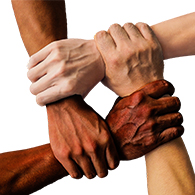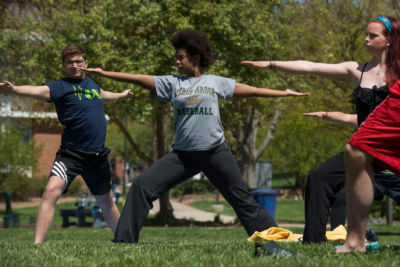By: Stacey Ellis, Faculty and Staff Engagement Program Manager, Human Resources
“What makes one person feel appreciated does not necessarily make another person feel appreciated.” – Gary Chapman and Paul White
We all want to be appreciated at work. Yet it can be challenging to figure out how best to show gratitude for all the different people in our organizations. Appreciation is an art. When we practice it well, we can foster well-being throughout our workplaces.
Appreciation consists of “acknowledging the value and meaning of something – an event, a person, a behavior, an object – and feeling a positive emotional connection to it” (Adler and Fagley). Effective workplace appreciation goes beyond simply acknowledging an employee’s achievements and performance metrics. It considers the whole person and highlights the overall value of the employee to the organization.
Workplace appreciation, delivered in a genuine and authentic manner, leads to both individual and organizational benefits. Those benefits include the promotion of positive psychological safety and sense of belonging, enhanced employee well-being and engagement, improved retention rates, increased productivity, and decreased absenteeism. Time invested in workplace appreciation pays dividends at both the employee and organizational level.
Genuine, Authentic, Frequent, and Individualized Appreciation
According to Gallup, the key to recognition in the workplace is ensuring it is frequent and individualized. To convey authentic and genuine appreciation, strategies should be tailored to the individual employee, their appreciation preferences, and to their workplace setting (remote/hybrid vs. fully onsite).
Beyond the Supervisor
While employees often look to supervisors to provide appreciation and recognition, any member of an organization can make a meaningful impact on employee morale and engagement by highlighting a colleague’s contributions and value.
The Five Languages of Workplace Appreciation
The following outlines the five languages of workplace appreciation along with tips and strategies to show individualized appreciation, as presented by Gary Chapman and Paul White in their book The 5 Languages of Appreciation in the Workplace.
Words of Affirmation
Nearly 45 percent of the population has words of affirmation as their primary workplace appreciation language. Words of affirmation can be exchanged personally/one-on-one, in front of team members (without public acknowledgement), in a public display (at an awards ceremony), or through written means to recognize accomplishments, character traits, and personality. Suggestions to recognize employees through words of affirmation are:
- Send a personalized, hand-written note, email, or Teams message.
- Have a private conversation, providing specific details that support your appreciation.
- Allow time during team meetings for shout-outs and words of appreciation.
- Submit a Pats for Patriots message to send an e-card to people in the Mason community.
Quality Time
About 26 percent of people say that quality time is their primary workplace appreciation language. Quality time consists of focused attention, quality conversation, shared experiences, the ability to work collegially on a task together, and opportunities for small group dialogue requires intentional time and effort to demonstrate genuine care and appreciation for a colleague.
Examples of quality time, to demonstrate appreciation, include the following:
- Focused attention: Give someone your undivided attention. Do not text, email, look at your phone, etc. Sit down and fully listen.
- Quality conversations: Create a psychologically safe environment to share thoughts, opinions, and experiences and empathetically listen to colleagues.
- Enjoy shared experiences together.
- Go to lunch as a team.
- Attend conferences, retreats, or teambuilding activities/events together.
- Participate in walking meetings.
- Volunteer to support a cause of mutual interest.
Acts of Service
Approximately 22 percent of people report that acts of service is their primary workplace language. Having colleagues reach out to help often makes others feel appreciated. Tips for acts of service include the following:
- Ensure your responsibilities are covered first.
- Serve voluntarily.
- Ask before you help; do not assume you know what help they want or need. Do the task their way.
- Questions to ask prior to helping should be specific. (“What would be helpful to you?,” “How would you like the task to be done?,” and “When would be the best time to help?”)
Tangible Gifts
About 6 percent of the population has tangible gifts as their primary workplace appreciation language. Here are some key tips for giving gifts as appreciation:
- Get to know the employee personally to discover which types of gifts are most meaningful.
- Make sure the type of gift is personalized and valued by the employee.
- Consider giving gifts that lead to experiences, time off, or flexible work arrangements.
Physical Touch
Only about 1 percent of professionals consider physical touch to be their primary language of appreciation in the workplace. Keep in mind that physical touch in the workplace may not be appropriate and therefore should be assumed to be unwelcome, until stated otherwise.
Workplace-appropriate acts of physical touch – if the recipient is open to those means of appreciation expression – include:
- a firm handshake
- a high-five
- a fist bump
- a pat on the back
In conclusion, appreciation is more than a feel-good sentiment; it is a strategic asset in cultivating a healthy workplace culture. It fuels motivation, engagement, well-being, and a sense of belonging, all of which are pivotal for an organization’s success.
Additional Resources
- Use the 5 Languages of Appreciation in the Workplace
- The Power of Meaningful Recognition Using CliftonStrengths
- Appreciation: Individual Differences in Finding Value and Meaning as a Unique Predictor of Subjective Well-Being
- Paul White’s newsletter: Appreciation at Work
- Gallup recognition articles
- Mason’s Recognition and Appreciation toolkit
- Mason’s Reward and Recognition initiative
Write one of these Thriving Together Series features! We’re looking for contributions on all topics related to well-being. Read other Thriving Together Series articles here and contact us at [email protected] for guidelines. Thank you for helping our Mason community thrive together online!






















